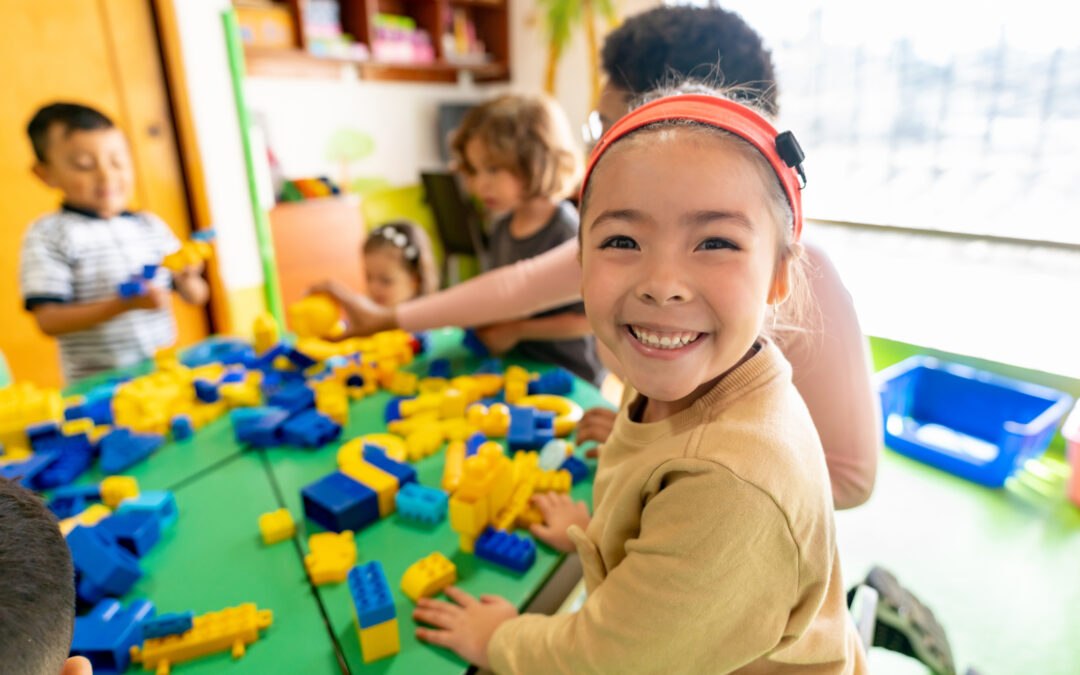Computational thinking, though often perceived as a concept limited to technology or coding, is a valuable problem-solving skill that students already apply in their everyday lives. However, the term “computational thinking” can feel intimidating or abstract to many students. To bridge this gap and help students understand its value, educators can showcase examples of abstraction—instances where students may already be engaging in computational thinking without recognizing it. By making these instances more concrete and relatable, teachers can help students see how this skill plays a role in various aspects of their daily lives, both now and in their future careers.
Examples of How Students Apply Computational Thinking in Everyday Life
Computational thinking is a valuable problem-solving skill for students and adults alike. Although computational thinking has the misconception of primarily involving technology or coding, it is applied in almost all areas of life—often without individuals recognizing they’re doing so. By showing students how they may already be effectively using computational thinking in their everyday lives, teachers can empower students to identify future opportunities for effective computational thinking and problem solving in everyday life.
In this article, we will explore examples of abstraction in the form of real-life scenarios where students are already applying computational thinking, whether consciously or not. By recognizing these examples, educators can empower students to understand how computational thinking can enhance their problem-solving abilities and make them more effective learners.
1. Solving Puzzles or Playing Games
One of the most common everyday examples of abstraction in the form of computational thinking can be found in the way students engage with puzzles or games. From a young age, children develop problem-solving skills as they figure out how to solve jigsaw puzzles. They analyze shapes and patterns, break down the puzzle into smaller sections, and develop a step-by-step approach to solving it more efficiently. Eventually, these strategies become more refined as children learn to recognize patterns in the puzzle, such as identifying corner pieces first, followed by edge pieces, and then focusing on colors or designs to complete the picture.
This same type of problem solving can be observed in other puzzles, such as Sudoku or Rubik’s Cubes, and strategy-based games like Minecraft, Zelda, or ROBLOX. Take, for example, a student who plays Mancala—a game involving strategic thinking. As they practice, they develop a mental checklist, creating a strategy that reduces the need to reinvent tactics with each game. This process of breaking down tasks, analyzing options, and implementing a repeatable strategy is a prime example of computational thinking.
Example from a Parent: One parent commented, “My 10-year-old loves Mancala and has mastered the game by breaking down the process into repeatable steps. She analyzes whether she gets the first or second move, then applies a mental checklist to determine the best next move, enhancing her effectiveness and efficiency during gameplay.”
2. Building with Legos or Blocks
Building with Legos, magnetic tiles, or other construction toys is another activity where students naturally apply computational thinking. As they design and construct their creations, they break down complex structures into smaller, manageable parts. This requires planning, problem solving, and troubleshooting. For example, when a student encounters a problem with their design—whether a structure is unstable or parts don’t fit together as expected—they need to approach the issue systematically. They may need to reassess their design, test various solutions, and revise their approach, demonstrating an application of computational thinking in a non-technical, hands-on environment.
This process of problem-solving and iteration is deeply rooted in computational thinking, as students need to devise solutions, evaluate options, and adjust their designs in real-time, reinforcing the connection between creativity and computational thinking.
3. Math Problems
Mathematics provides another clear example of how students already apply computational thinking. Whether working through problems on a worksheet, solving real-world math problems, or using math to solve personal challenges, students engage in computational thinking each time they break down a problem and work through the steps required to find a solution. This is particularly evident in word problems, where students must first identify the problem, then break it into manageable parts, apply the appropriate mathematical operations, and eventually derive the solution.
The ability to organize information, analyze patterns, and apply systematic steps to arrive at an answer is a key component of computational thinking. For example, when solving a multi-step algebraic equation, students must abstract complex relationships between variables and operations, making the problem-solving process more efficient and structured.
4. Science Experiments
In science, computational thinking plays a vital role in conducting experiments and research. The scientific method is a prime example of how computational thinking is embedded in everyday activities. The process of formulating hypotheses, designing experiments, collecting data, and drawing conclusions follows a structured, logical sequence that mirrors computational thinking. Students don’t always recognize that they’re employing computational thinking when conducting science experiments, but they are indeed engaging in abstraction when they organize their thoughts, break down the experiment into steps, and analyze the results systematically.
Moreover, this process extends to everyday problem-solving scenarios as well. For instance, when students troubleshoot a device, innovate a new idea, or even explore a new concept, they often unknowingly apply the same thought processes as they would in a scientific experiment. These mental frameworks can be applied far beyond the classroom and help students approach real-world challenges more effectively.
5. Creative and Academic Writing
Writing is another area where students engage in computational thinking. Whether they are writing a creative story or completing an academic paper, students must organize their thoughts, structure their ideas, and consider cause-and-effect relationships. For creative writing, students may need to design characters, set up a plot, and consider how events unfold. In academic writing, the process involves logical organization, critical analysis, and synthesis of ideas.
Writing, in both academic and creative contexts, requires students to think systematically about how to convey ideas clearly. The abstraction involved in selecting words, structuring sentences, and organizing paragraphs follows a logical pattern of computational thinking, requiring both creativity and problem solving.
6. Art and Design
Even in artistic endeavors, computational thinking is relevant. When students engage in drawing, painting, or designing, they must plan and organize their work. This includes making decisions about colors, shapes, and layout, and figuring out how to combine these elements into a cohesive whole. In addition, as students encounter challenges during the creative process—such as figuring out how to represent an idea visually—they engage in troubleshooting and problem solving, which are core aspects of computational thinking.
The abstraction in art is evident in how students organize visual elements in their minds before translating them to paper or canvas. By applying systematic thinking to their artistic process, students can create more effective and cohesive designs, demonstrating that computational thinking is valuable in creative fields as well.
7. Solving Everyday Problems
Computational thinking is present even in the most routine activities of everyday life. Whether organizing their schoolwork, planning a bike route, or deciding the best way to approach a task, students are constantly engaging in abstraction. For example, a student might plan their after-school schedule by breaking it into chunks of time, considering the most efficient order of tasks, and adjusting based on new information. Similarly, when they organize their toys, collaborate with a friend, or solve a practical problem at home, they are engaging in the same type of step-by-step problem solving that characterizes computational thinking.
In fact, students may not even recognize that they are using computational thinking in these scenarios, making it essential for educators to help students identify these moments and understand the importance of such skills in everyday problem solving.
Final Thoughts
By teaching students to recognize the areas where they already use computational thinking in their lives, educators can make the concept more tangible and relevant. When students understand that computational thinking isn’t confined to technology or coding, but is a process that helps solve problems and make decisions in everyday situations, they can begin to see its value in their schoolwork, careers, and personal lives.
This shift from abstract to concrete thinking is essential for students to develop confidence in their problem-solving abilities. Moreover, by making computational thinking more relatable, educators can encourage students to embrace the skill and apply it more intentionally in future opportunities. Ultimately, computational thinking isn’t just about coding—it’s about equipping students with the tools they need to approach problems effectively and efficiently, both now and in the future.
To explore more examples of abstraction and to help students master the foundational elements of computational thinking, consider incorporating learning platforms like EasyTech, which offer easy-to-implement lessons that help students build these critical skills.
This article was originally published in September 2023 and was updated in January 2025 to expand on ideas and provide more relevant examples.

Learning.com Team
Staff Writers
Founded in 1999, Learning.com provides educators with solutions to prepare their students with critical digital skills. Our web-based curriculum for grades K-12 engages students as they learn keyboarding, online safety, applied productivity tools, computational thinking, coding and more.
Further Reading
Netiquette as a Tool for Promoting a Positive Classroom Culture
Technology has become an essential part of modern classrooms – beyond being part of “future readiness,” it’s a necessary everyday skill for K-12...
How Keyboarding Skills Enhance Digital Literacy Across Subjects for K-12 Students
In today's rapidly evolving digital landscape, digital literacy is essential for students to thrive in both their academic and future professional...
What Is Digital Citizenship? Key Skills & Best Practices for Students
In a world dominated by virtual interactions, being a responsible digital citizen has never been more crucial. Students today grow up with social...




